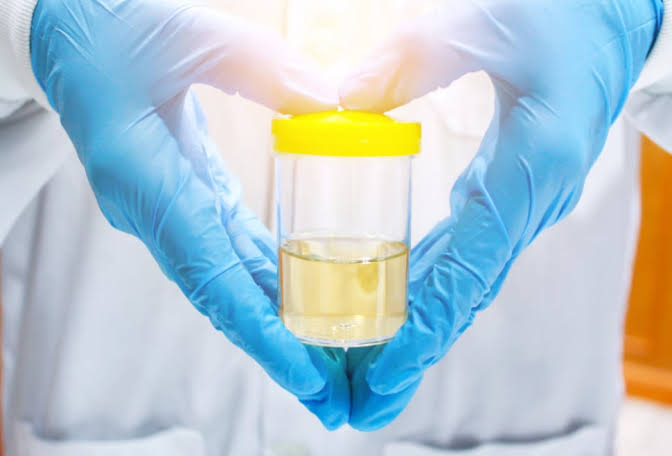
What Does a Complete Urine Examination Involve? A Step-by-step Overview
A complete urine examination is a commonly performed test that evaluates various aspects of your health using a urine sample. Healthcare providers frequently utilise urinalysis tests to screen for or monitor specific health conditions.
Various conditions and illnesses can impact your body’s ability to eliminate toxins and waste. These include disorders affecting organs like kidneys, lungs, urinary tract, bladder, and skin. Any issues with these organs can alter the concentration, appearance, and composition of your urine. A complete urine examination, also known as a urinalysis, is a common laboratory test that aids doctors in identifying problems indicated by your urine. It helps in detecting and managing a wide array of disorders, including kidney diseases, urinary tract infections, and diabetes. Here’s everything you need to know about what a urine routine test entails.
What Does a Complete Urine Examination Involve?
For a urine routine test, your urine sample undergoes assessment in three ways: visual examination, dipstick testing and microscopic examination.
- Visual Examination
In a urine routine test, a laboratory technician scrutinises the appearance of your urine. Normally, urine is clear. However, cloudiness or an unusual odour could suggest an issue, such as an infection. The presence of protein in your urine may make it appear frothy. Blood in the urine can give it a red or brown hue. The colour of urine can also be affected by recent dietary intake or certain medications. For instance, the consumption of rhubarb or beets might impart a red tint to the urine.
- Dipstick Test
A dipstick, which is a thin, plastic stick with chemical strips, is immersed in the urine. Chemical strips change colour if specific substances are found or if their levels exceed normal limits. The dipstick test assesses:
- Concentration: Concentration measurement indicates the density of particles in urine. Higher than usual concentration often results from inadequate fluid intake.
- Acidity (pH): The pH level indicates urine acidity. An abnormal pH level might suggest a urinary tract or kidney disorder.
- Protein: Low levels of protein in urine are common. Slight increases may not be concerning, but larger amounts could indicate kidney issues.
- Bilirubin: Bilirubin is a by-product of red blood cell breakdown. Typically, it circulates in the blood and passes into the liver for removal. The presence of bilirubin in urine might indicate liver disease or damage.
- Sugar: Normally, the amount of sugar (glucose) in urine is too low to detect. Any presence of sugar in this test usually warrants further testing for diabetes.
- Ketones: Like sugar, any detection of ketones in your urine may signal diabetes and requires further investigation.
- Blood: The presence of blood in urine necessitates additional testing. It could indicate infection, kidney damage, bladder or kidney stones, bladder or kidney cancer, or blood disorders.
- Evidence of Infection: The presence of leukocyte esterase or nitrites, which are produced by white blood cells, in urine may indicate a urinary tract infection.
- Microscopic Examination
This test, sometimes included in a urine routine test, involves examining drops of concentrated urine—urine that has been centrifuged—under a microscope. If any of the following levels are elevated, further testing may be required:
- Red blood cells may suggest a blood disorder, kidney disease, or another underlying medical condition such as bladder cancer.
- White blood cells (leukocytes) may indicate an infection.
- Presence of yeast, bacteria, or parasites may indicate an infection.
- Crystals formed from chemicals in urine may suggest the presence of kidney stones.
- Casts—tube-shaped proteins—can be present due to kidney disorders.
How is a Urine Routine Test Done?
You may gather a urine sample either at home or at your doctor’s clinic. You are typically offered containers for urine samples. You may be instructed to collect the sample at home immediately after you wake up in the morning since this is when your urine is more concentrated. You might be advised to collect the sample midstream using a clean-catch method. This method involves the steps mentioned below:
- Cleanse your urinary opening. Men should wipe the tip of their penis. Women should separate their labia and cleanse from front to back.
- Start urinating into the toilet bowl.
- Then, bring the collection container provided to you into the urine stream.
- Urinate at least 30 to 60 millilitres into the container.
- Once you are done urinating, deliver the container as instructed by your healthcare provider.
In some instances, if necessary, your provider may insert a thin, flexible tube (catheter) through the urinary tract opening and into the bladder to collect the urine sample. The urine sample is then sent to a laboratory for analysis. You can resume your usual activities immediately.
Urinalysis alone typically doesn’t offer a conclusive diagnosis. Depending on why your healthcare provider suggested this test, you may require further examination for any abnormal findings. Assessing the urinalysis results alongside other tests can assist your provider in determining the next course of action. All in all, a urine routine test plays a key role in monitoring and maintaining your overall health.
